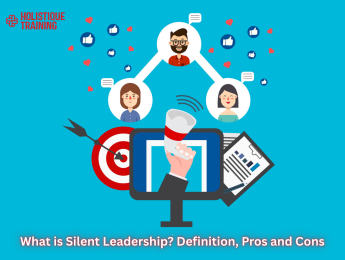- Table of Contents
- Introduction
- What is the Classical Management Theory?
- 4 Main Principles of Classical Management Theory
- 1. Hierarchical Structure
- 2. Labour Specialisation
- 3. Wage Incentives
- 4. Single or Autocratic Leadership
- Different Branches of Classical Management Theory
- 1. Max Weber’s Bureaucratic Management
- 2. Henri Fayol’s Administrative Management
- 3. F.W. Taylor’s Scientific Management
- The Benefits of Applying the Classical Management Theory
- 1. Clear Structure and Defined Roles
- 2. Increased Productivity Through Specialisation
- 3. Consistency and Stability in Operations
- 4. Predictable Decision-Making and Strong Leadership
- 5. Motivation Through Wage Incentives
- 6. Improved Focus on Efficiency and Resource Management
- 7. Enhanced Accountability and Monitoring
- 8. Easier Implementation of Standardised Training Programs
- Drawbacks of the Classical Management Theory
- 1. Lack of Flexibility and Innovation
- 2. Overemphasis on Control and Authority
- 3. Focus on Financial Incentives as the Sole Motivator
- 4. Limited Adaptability to Complex and Dynamic Environments
- 5. Neglect of Employee Well-Being and Satisfaction
- 6. Encourages Bureaucracy and Red Tape
- 7. Inefficient Communication Channels
- 8. Fails to Address Diversity and Inclusion
- Tips for Implementing Classical Management Theory
- 1. Tailor the Hierarchical Structure to Fit Your Organisation’s Needs
- 2. Balance Specialization with Cross-Training Opportunities
- 3. Incorporate Employee Feedback Despite a Top-Down Structure
- 4. Complement Wage Incentives with Non-Monetary Rewards
- 5. Streamline Bureaucratic Processes to Avoid Red Tape
- 6. Adapt Autocratic Leadership to Include Elements of Participative Management
- 7. Monitor Employee Well-Being to Prevent Burnout
- 8. Use Clear Communication Channels to Support Hierarchical Management
- 9. Periodically Evaluate and Adjust the Implementation Strategy
- 10. Combine Classical Theory with Modern Management Practices
- Conclusion
Introduction
How organisations are structured today owes much to early pioneers who sought to create systems for efficiency, order, and productivity. Classical management theory is a foundational concept in business that emerged during the Industrial Revolution and continues to shape how companies function. This theory laid the groundwork for various management practices emphasising structured hierarchies, specialised labour, and centralised decision-making.
In this post, we’ll explore the essence of classical management theory, breaking down its four main principles, examining its different branches, and discussing the advantages and challenges of applying it. We’ll also provide practical tips for implementing this theory effectively in the workplace.
What is the Classical Management Theory?
Classical management theory is a framework designed to optimise productivity by establishing clear processes, standardised roles, and hierarchical authority. It focuses on maximising output through efficiency and order, assuming that employees are primarily motivated by financial incentives and need strong leadership to perform well.
The theory arose from the need to improve workplace productivity during the Industrial Revolution, when rapid industrial growth required better organisation of tasks and people. Early thinkers believed that structured and scientific approaches to management could eliminate inefficiencies, making businesses more productive and profitable. Central to this approach is the idea that every individual should have a well-defined role within a rigid organisational structure, ensuring smooth operations.
Despite its age, classical management theory still influences modern management styles, particularly in highly regulated industries such as manufacturing and government, where rules, hierarchy, and order are essential.
4 Main Principles of Classical Management Theory
The classical management theory revolves around four core principles that guide how organisations should structure and manage their operations. These principles include hierarchical structure, labour specialisation, wage incentives, and single or autocratic leadership.
1. Hierarchical Structure
Classical management emphasises a top-down approach, with clearly defined authority at each level. Decisions are made at the top and communicated down the chain of command, ensuring everyone knows their role and whom they report to. This structure ensures instructions flow smoothly from management to workers, minimising confusion and conflicts about responsibilities.
A well-defined hierarchy also provides clear career progression, with employees working toward promotions and higher positions. However, the rigidity of such a structure can lead to bureaucracy and slow decision-making processes in large organisations.
2. Labour Specialisation
The theory promotes the idea that workers should focus on specific tasks based on their skills, allowing them to become highly efficient at what they do. Companies can maximise productivity and reduce errors by dividing complex jobs into smaller, repetitive tasks.
This concept, often called division of labour, was instrumental in transforming industries during the Industrial Revolution, as it allowed factories to mass-produce goods with greater consistency and speed. However, excessive specialisation can sometimes lead to job dissatisfaction, as employees may find repetitive tasks unfulfilling.
3. Wage Incentives
Classical management theory assumes that workers are primarily motivated by financial rewards. Organisations following this approach design wage structures that align with performance, offering bonuses or additional pay to employees who exceed their targets. This approach encourages workers to be productive and efficient, reinforcing that hard work leads to financial gain.
Although wage incentives can increase productivity, they may also lead to unhealthy employee competition, reducing collaboration and teamwork in certain settings.
4. Single or Autocratic Leadership
Another core element of classical management theory is centralised leadership, where a single leader or manager holds most of the decision-making power. Leaders set the goals, issue directives, and ensure compliance, leaving little room for employee input.
While this type of leadership can foster quick decision-making and maintain order, it can also suppress creativity and innovation. In modern workplaces, a more collaborative approach to leadership is often preferred to balance control with employee empowerment.
Different Branches of Classical Management Theory
Classical management theory comprises several branches, each focusing on managing people and operations. The three most influential branches are bureaucratic, administrative, and scientific management.
1. Max Weber’s Bureaucratic Management
A German sociologist, Max Weber, emphasised the importance of rules, formal procedures, and well-defined organisational roles. Bureaucratic management focuses on establishing a structured system where authority is tied to positions rather than individuals, promoting consistency and fairness. Weber believed this approach could eliminate favouritism and ensure employees were treated equitably based on objective criteria.
2. Henri Fayol’s Administrative Management
Henri Fayol, a French industrialist, developed administrative management theory, which outlines key functions of management, such as planning, organising, commanding, coordinating, and controlling. Fayol believed that effective managers needed to possess specific skills to guide and coordinate the activities of employees. His principles, including unity of command (one superior per employee) and scalar chains (clear lines of authority), remain relevant in management education today.
3. F.W. Taylor’s Scientific Management
Frederick Winslow Taylor’s scientific management theory focused on optimising the performance of individual workers through time studies, standardised tasks, andtraining programs. Taylor argued that work processes should be analysed scientifically to identify the most efficient way of completing tasks. His ideas revolutionised industries by increasing productivity and minimising waste. However, critics argue that the focus on efficiency came at the expense of employee well-being and creativity.
The Benefits of Applying the Classical Management Theory
Classical management theory has endured due to its practical and structured approach to managing organisations. Its principles provide a solid foundation for improving efficiency and productivity, especially in industries that thrive on consistency and control. Below, we explore these benefits in greater depth.
1. Clear Structure and Defined Roles
One of the most significant advantages of classical management theory is the emphasis on a well-defined organisational structure. Employees know their roles and responsibilities and whom they report to, which eliminates confusion and minimises task overlaps. This structure reduces the potential for miscommunication and fosters accountability, as each individual understands their contribution to the overall operation.
Clear hierarchies also create transparency about career progression. Employees understand the path for growth, promotions, and expectations, which can improve motivation. In large organisations, structured reporting lines ensure managers can effectively monitor performance, delegate tasks, and resolve issues promptly.
2. Increased Productivity Through Specialisation
Labour specialisation is another key benefit of the classical management approach. Organisations can achieve higher efficiency and accuracy by assigning employees to specific tasks based on their skills and expertise. Workers become experts in their roles, which reduces errors and ensures that tasks are completed quickly and competently.
This method is especially useful in industries that require repetitive processes, such as manufacturing, where speed and consistency are essential. Specialisation allows managers to divide complex projects into smaller, manageable tasks, making it easier to coordinate large teams. Additionally, training programs can focus on refining specific skills, ensuring that employees become even more proficient over time.
3. Consistency and Stability in Operations
The reliance on rules, policies, and standardised procedures ensures that organisations consistently perform tasks. This predictability is crucial for businesses that require precise operations, such as healthcare, finance, and government agencies. Employees across departments follow the same guidelines, which reduces variability and ensures uniform service delivery.
Stability also contributes to customer satisfaction. Clients and customers are more likely to trust businesses that offer consistent products or services, reinforcing brand loyalty. For example, fast-food chains benefit from strict adherence to operational processes, ensuring customers receive the same experience regardless of location.
Moreover, standardised procedures help new employees integrate more quickly into the organisation. Training programs built on established guidelines provide a clear framework for onboarding, reducing the time it takes for new hires to become productive team members.
4. Predictable Decision-Making and Strong Leadership
The autocratic leadership style promoted by classical management theory ensures quick and predictable decision-making. In this model, leaders can set goals, make decisions, and enforce rules without needing extensive consultation from subordinates. This centralised approach can be beneficial during emergencies or time-sensitive situations, where delays could lead to significant losses.
For industries that require strict control, such as military organisations or logistics companies, strong leadership ensures that everyone follows orders without question, maintaining order and discipline. Centralised leadership also reduces the risk of conflicting priorities, as employees clearly understand the organisation’s goals and directives.
While autocratic leadership may seem rigid, it provides much-needed stability for businesses operating in high-pressure environments. When managers have full authority to direct operations, uncertainty minimises, making it easier for employees to focus on their tasks.
5. Motivation Through Wage Incentives
Classical management theory assumes that financial rewards are the primary motivator for employees, emphasising wage incentives to boost performance. Organisations using this approach design compensation packages that reward employees for meeting or exceeding specific targets. This structure encourages productivity by linking personal success with financial gain.
Incentive-based pay systems, such as bonuses, commissions, or performance-based raises, push employees to strive for excellence. For example, in sales roles, commission structures motivate employees to close more deals, benefiting both the employee and the company. Similarly, in manufacturing, piece-rate pay encourages workers to produce more units in less time, improving output and profitability.
Wage incentives also help create a competitive work environment where high-performing employees are recognised and rewarded. This motivates individuals and reinforces the organisation's culture of performance excellence. Furthermore, when employees see a direct connection between their efforts and rewards, they are likelier to remain engaged and loyal to the company.
6. Improved Focus on Efficiency and Resource Management
Classical management theory’s focus on efficiency ensures that organisations optimally use their resources, including time, labour, and capital. Managers are encouraged to analyse tasks and workflows carefully to identify redundancies and streamline operations. This systematic approach minimises waste, allowing businesses to operate more cost-effectively.
For example, Frederick Taylor’s scientific management branch within classical theory highlights how detailed time studies and task standardisation can improve performance. Companies that apply these principles can fine-tune their processes to reduce unnecessary steps and maximise productivity. This level of efficiency translates into lower operational costs and higher profit margins.
In environments where budgets are tight, or competition is fierce, efficient resource management gives organisations a competitive edge. Leaders can allocate resources more effectively, ensuring that every dollar spent or hour worked contributes meaningfully to the company’s goals.
7. Enhanced Accountability and Monitoring
Classical management theory's structured nature ensures managers can monitor employee performance more effectively. Each employee has a designated role, making identifying who is responsible for specific outcomes easier. When expectations are clearly defined, employees know their expectations, and managers can hold them accountable for meeting those standards.
Regular performance evaluations and metrics are often used to track progress and identify areas for improvement. In cases where employees underperform, managers can quickly intervene with feedback, training, or corrective actions. This continuous monitoring helps maintain high productivity and ensures that teams remain aligned with organisational goals.
Moreover, accountability fosters a culture of responsibility within the workplace. Employees take ownership of their tasks, knowing that their individual performance contributes to the organisation's overall success.
8. Easier Implementation of Standardised Training Programs
The formal processes encouraged by classical management theory make it easier for organisations to develop standardised training programs. With well-documented procedures and clear job descriptions, companies can create consistent training modules that ensure every employee receives the same level of instruction.
Standardised training promotes fairness and equality, as all employees are given the same opportunities to learn and develop their skills. It also ensures that the quality of work remains consistent, regardless of who is performing the task. Standardised training programs are essential for maintaining service quality in industries with high turnover rates, such as retail or hospitality.
Classical management theory may seem rigid by modern standards, but its benefits are undeniable, especially in environments that value stability, consistency, and order. The theory provides a framework for structured leadership, clear roles, and efficient operations, all essential for scaling businesses and managing large teams. However, organisations must balance classical management principles with more flexible and innovative approaches as they become more dynamic.
By understanding classical management theory's strengths, companies can selectively apply their principles, ensuring that they benefit from its structure and efficiency without compromising employee satisfaction or creativity.
Drawbacks of the Classical Management Theory
While classical management theory offers valuable benefits such as clear structures, specialisation, and efficiency, it has limitations. Its rigid framework, focus on control, and emphasis on financial rewards may clash with modern-day business environments prioritising innovation, adaptability, and employee well-being. Below is an in-depth exploration of the key drawbacks of classical management theory.
1. Lack of Flexibility and Innovation
One of the most significant criticisms of classical management theory is its rigid structure, which can hinder innovation and creativity. Organisations under this theory tend to rely heavily on formal procedures, fixed hierarchies, and routine tasks, leaving little room for experimentation or novel ideas. Employees are often expected to follow established guidelines rather than think outside the box, which stifles innovation.
This lack of flexibility can be problematic in dynamic industries, such as technology or marketing, where rapid change and creative problem-solving are essential. Companies that stick strictly to classical management principles may struggle to keep up with market trends, technological advancements, or shifts in consumer behaviour.
2. Overemphasis on Control and Authority
Classical management theory promotes a top-down, autocratic leadership style, where decisions are centralised at the upper levels of management. While this can ensure stability and order, it limits employee participation in decision-making processes. Workers are rarely consulted on important matters, resulting in disengagement and low morale.
In today's work environments, employees often value autonomy and collaborative leadership. Companies that continue to rely on strict hierarchical structures may find it challenging to attract and retain top talent, especially from younger generations that prefer more inclusive work cultures. Furthermore, rigid control can discourage employee initiative, leading to missed opportunities for innovation and operational improvements.
3. Focus on Financial Incentives as the Sole Motivator
Classical management theory assumes that financial incentives are the primary motivator for employees. While monetary rewards can be effective to some extent, they do not address other intrinsic motivators such as personal growth, job satisfaction, or a sense of purpose. Employees driven by factors beyond financial gain may feel undervalued in organisations that follow this theory.
Moreover, an over-reliance on wage incentives can lead to unhealthy competition within the workplace. Employees might focus on achieving short-term targets to earn bonuses, neglecting other essential aspects of their roles, such as teamwork or long-term planning. This narrow focus on financial performance can also increase stress and burnout, harming productivity and employee well-being.
4. Limited Adaptability to Complex and Dynamic Environments
Classical management theory works well in stable environments with predictable processes, such as manufacturing or logistics. However, it is less suited for industries that face constant change, such as technology, healthcare, or consulting. In complex environments, rigid structures and formal rules can slow down decision-making and prevent organisations from responding quickly to external changes.
Companies that follow classical management principles may struggle to pivot or adopt new business models when necessary. For example, businesses need to act quickly and creatively during times of crisis, such as economic downturns or disruptions caused by technological advancements. A rigid adherence to classical management practices can create bottlenecks, reducing the organisation’s ability to adapt and innovate.
5. Neglect of Employee Well-Being and Satisfaction
The classical management theory focuses primarily on productivity, efficiency, and profit, often at the expense of employee well-being. Since the theory emphasises control, rules, and wage-based incentives, little attention is given to factors such as work-life balance,job satisfaction, or mental health.
Modern research shows that employee satisfaction plays a critical role in overall performance and retention, and reducing turnover rates, according toSafety Culture. Workers who feel micromanaged or undervalued are more likely to experience burnout or leave the organisation. Additionally, the lack of emotional connection between employees and their managers—common in autocratic environments—can lead to high turnover rates.
Without addressing employees’ psychological and emotional needs, companies risk creating disengaged workforces, which can affect productivity and increase recruitment costs due to higher employee attrition.
6. Encourages Bureaucracy and Red Tape
Classical management theory, particularly in its bureaucratic form (as described by Max Weber), promotes the use of standardised procedures and formal rules to govern operations. While this approach ensures consistency, it can also result in excessive bureaucracy, wheredecision-making processes become bogged down by unnecessary steps and approvals.
In highly bureaucratic organisations, even minor tasks may require multiple layers of approval, leading to inefficiency and frustration. Employees may feel constrained by cumbersome procedures, reducing their motivation to perform. Furthermore, bureaucratic systems often resist change, making it difficult for organisations to implement new processes or policies quickly.
7. Inefficient Communication Channels
The hierarchical structure promoted by classical management theory can lead to communication barriers between different levels of the organisation. In such structures, information flows primarily from the top down, with little opportunity for employee feedback at the lower levels. This can create a disconnect between management and frontline workers, resulting in decisions that are out of touch with operational realities.
Delayed communication can also slow down problem-solving and hinder the organisation’s ability to address issues proactively. For example, employees who encounter challenges in their daily tasks may find it difficult to escalate concerns effectively, as rigid structures discourage open communication. Over time, this lack of open dialogue can erode trust between employees and management.
8. Fails to Address Diversity and Inclusion
Classical management theory emerged when diversity and inclusion were not considered priorities. As a result, the theory does not account for the benefits of diverse perspectives, inclusive leadership, or the need for equitable treatment of employees. Organisations that rely solely on this theory may overlook the importance of fostering diverse and inclusive workplaces, which are now recognised as essential for innovation and growth.
In today’s globalised world, businesses must create environments that value employees from different backgrounds and cultures. In fact,statistics show that 76% of employees and job seekers stated that diversity plays a significant role in their decision-making when evaluating job offers. A rigid, top-down management approach can stifle the contributions of underrepresented groups, limiting the organisation’s ability to benefit from diverse perspectives. Companies that fail to embrace diversity may struggle to remain competitive in an increasingly interconnected market.
The classical management theory provides a structured approach to management, but its limitations make it less suitable for modern, dynamic work environments. While it excels at promoting efficiency, consistency, and control, it often overlooks critical aspects such as employee well-being, adaptability, and collaboration.
To thrive in today’s business landscape, organisations need to balance the strengths of classical management with more flexible and inclusive approaches. By integrating modern management practices—such as participative leadership, agile methods, and employee empowerment—companies can overcome the drawbacks of classical theory and create more resilient, innovative, and engaged workforces.
Aspect | Classical Management | Human Relations Management | Contingency Management |
Focus | Efficiency through structure and specialisation | Employee well-being and motivation | Adapts strategies to specific situations |
Leadership Style | Autocratic, top-down decision-making | Participative, encourages employee input | Flexible, based on context and needs |
Motivation | Wage incentives and performance rewards | Social needs and recognition | Situation-dependent rewards and support |
Structure | Rigid hierarchy with fixed roles | Informal structure with collaborative efforts | Adaptive structure based on organisational goals |
Best Use Case | Large-scale, process-driven organisations | Companies valuing employee engagement and morale | Complex environments need flexibility |
Table 1: Comparing Classical Management to Different Types of Management
Tips for Implementing Classical Management Theory
Successfully implementing classical management theory requires careful planning and consideration of both its benefits and limitations. While the theory emphasises structure, hierarchy, and efficiency, modern organisations need to adapt these principles to fit today’s dynamic work environments. Below are practical tips to help organisations implement classical management theory effectively, balancing its strengths with the realities of modern business practices.
1. Tailor the Hierarchical Structure to Fit Your Organisation’s Needs
Classical management theory relies on a clear chain of command, where each employee has defined roles and reports to a specific manager. While the hierarchical structure ensures accountability, aligning the hierarchy with your organisation's size, industry, and culture is essential.
- For smaller companies, a flatter hierarchy may work better to maintain agility while still enforcing clear responsibilities.
- For larger organisations, it’s helpful to build multiple tiers of leadership, ensuring effective communication and oversight at every level.
- Use technology tools (such as organisational charts orrole-mapping software) to make the reporting structure visible and easy to understand for everyone.
Clear reporting lines help employees understand their roles and responsibilities, minimising confusion and streamlining workflows.
2. Balance Specialization with Cross-Training Opportunities
Labour specialisation, a core principle of classical management theory, ensures that employees focus on tasks where they have expertise, leading to greater efficiency. However, over-specialisation can result in employees becoming too narrow in their skills, reducing flexibility.
To address this, organisations can:
- Implement cross-training programs so employees learn secondary skills, enabling them to step into other roles when needed.
- Encourage job rotation, especially in departments where burnout or monotony may occur due to repetitive tasks.
- Build specialised teams with a mix of complementary skill sets, improving collaboration while retaining the benefits of specialisation.
This approach ensures the organisation maintains operational efficiency while fostering a more adaptive workforce.
3. Incorporate Employee Feedback Despite a Top-Down Structure
While classical management theory encourages a top-down leadership style, gathering employee input to improve decision-making and boost morale is critical. Today’s workers value being heard, and creating opportunities for feedback helps balance control with engagement.
- Useperiodic surveys to gather employee opinions on workplace processes and management practices.
- Establishopen-door policies that encourage employees to share ideas or concerns with supervisors.
- Createfeedback loops by incorporating employee suggestions where possible and acknowledging their contributions.
This approach promotes a more inclusive workplace without compromising the stability and order provided by a hierarchical structure.
4. Complement Wage Incentives with Non-Monetary Rewards
Although financial incentives are essential to classical management theory, relying solely on monetary rewards can limit employee motivation. Organisations should provide a mix of financial and non-financial rewards to enhance engagement and performance.
- Recognise employees publicly throughawards and recognition programs.
- Offerprofessional development opportunities, such as training or mentorship, to nurture long-term career growth.
- Provideflexible work arrangements (e.g., remote work or flexible hours) to meet employees’ personal needs.
By diversifying incentives, organisations can foster loyalty, motivation, and job satisfaction beyond paychecks and bonuses.
5. Streamline Bureaucratic Processes to Avoid Red Tape
While bureaucracy is essential for maintaining order and consistency, it can sometimes hinder agility and decision-making. To successfully implement classical management theory, organisations need to strike a balance between structure and efficiency.
- Identify and eliminate unnecessary procedures that slow down workflows without adding value.
- Useworkflow automation tools to reduce manual paperwork and approvals.
- Implementdecision-making frameworks that empower managers at different levels to make routine decisions independently, reducing bottlenecks.
This will ensure that bureaucracy serves its purpose—providing structure—without becoming an obstacle to productivity and responsiveness.
6. Adapt Autocratic Leadership to Include Elements of Participative Management
Classical management theory emphasises single or autocratic leadership, where decisions are centralised. While this leadership style ensures clarity and direction, it’s essential to incorporate participative elements to foster employee engagement and collaboration.
- Leaders caninvolve employees in brainstorming sessions while still maintaining decision-making authority.
- Encourageteam-level autonomy, where managers set objectives but allow employees to determine how to achieve them.
- Usedelegation effectively, giving team members responsibility for specific tasks while ensuring alignment with organisational goals.
This balanced approach allows leaders to maintain control while encouraging collaboration and innovation.
7. Monitor Employee Well-Being to Prevent Burnout
Classical management theory focuses heavily on productivity, which can lead to overwork and burnout if not managed carefully. Organisations need to pay attention to employee well-being to implement the theory effectively.
- Establishreasonable performance metrics that encourage productivity without overwhelming employees.
- Promotework-life balance by setting boundaries around working hours and encouraging time off.
- Create asupportive work environment where managers actively check in with employees and provide assistance when needed.
By prioritising well-being, companies can maintain high productivity levels without compromising employee health and satisfaction.
Metric | Description |
Productivity Levels | Measures output relative to time and resources |
Employee Turnover Rate | Tracks the frequency of employees leaving the organisation |
Task Completion Rate | Monitors how quickly tasks are finished |
Profit Margins | Assesses financial gains after all expenses |
Compliance with Procedures | Evaluates adherence to rules and workflows |
Table 2: Metrics to measure the effectiveness of classical management
8. Use Clear Communication Channels to Support Hierarchical Management
A common pitfall of classical management theory is inefficient communication caused by rigid hierarchies. Organisations should establish clear and effective communication channels across all levels to ensure smooth operations.
- Usedigital communication platforms (such as Slack, Microsoft Teams, or email systems) to facilitate quick and clear information sharing.
- Conductregular meetings and briefings to ensure alignment between departments and management levels.
- Createcommunication protocols that define how information flows between employees and managers, minimising miscommunication and delays.
These measures enhance transparency, ensuring employees remain informed and aligned with organisational goals.
9. Periodically Evaluate and Adjust the Implementation Strategy
Implementing classical management theory is not a one-time process. Organisations need to periodically assess the effectiveness of their management practices and make adjustments as needed.
- Conductregular performance reviews to determine if the hierarchical structure and processes achieve desired outcomes.
- Usebenchmarking techniques to compare your organisation’s efficiency and productivity with industry standards.
- Solicitemployee and manager feedback to identify areas where adjustments are necessary.
Continuous evaluation ensures that the management framework remains relevant and effective in a changing business landscape.
10. Combine Classical Theory with Modern Management Practices
Finally, it is essential to recognise that classical management theory is most effective when combined with modern management approaches. Organisations can draw from agile, participative, or human-centric management models to complement the rigidity of classical theory.
- Incorporateagile practices where flexibility and adaptability are needed, such as project management or product development.
- Useemployee engagement strategies to foster a collaborative culture within the structured framework.
- Applydata-driven management tools, such as performance dashboards, to enhance decision-making and accountability.
This hybrid approach ensures that organisations benefit from the strengths of classical theory while remaining adaptable and innovative.
Conclusion
Classical management theory remains a valuable framework for organisations seeking order, efficiency, and productivity. Its principles of hierarchical structure, labour specialisation, wage incentives, and autocratic leadership provide clear guidelines for managing operations. However, it also has limitations, including a tendency to discourage innovation and employee engagement.
By understanding both the benefits and drawbacks of this theory, organisations can apply it thoughtfully, blending structure with flexibility. Whether managing a small team or a large corporation, the principles of classical management offer timeless insights into the art of effective leadership. For new supervisors looking to develop their leadership skills, our"Leadership Styles for New Supervisors" course provides essential tools to master both classical and modern approaches. Participants will learn how to balance authority with employee engagement while fostering productivity. Equip yourself with the knowledge needed to become a confident and adaptable leader—enrol today!
























